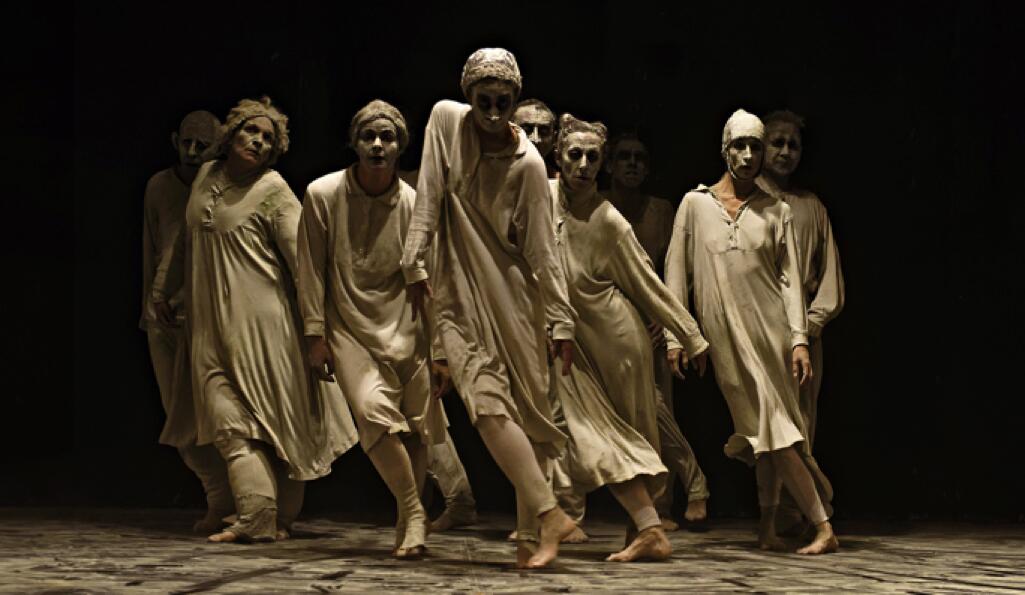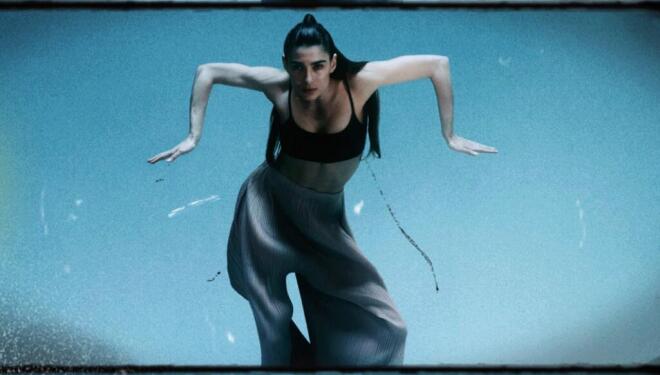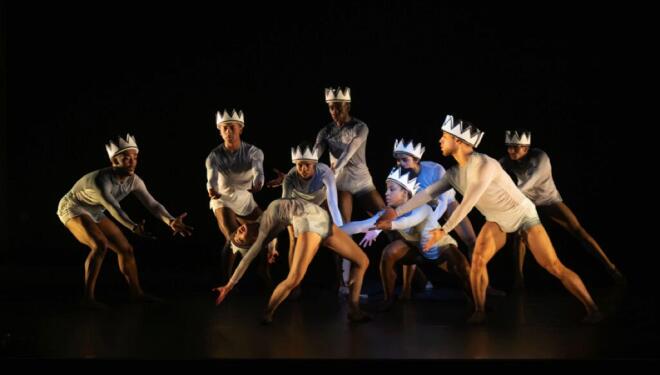Choreographer Maguy Marin, May B and Samuel Beckett
As Sadler's Wells prepares to host her seminal work May B, the French choreographer Maguy Marin talks to Culture Whisper

Directly inspired by the playwright Samuel Beckett, who met Marin and gave his blessing to the project, it premiered at the 1981 Avignon Festival and has since been performed in over 40 countries, in the process acquiring almost mythical status. It is, in the words of The Guardian, a work ‘of visionary assurance.’
Born in 1951, Maguy Marin is considered one of the pioneers of modern French dance. She started as a classical dancer before studying at Maurice Béjart’s Mudra school in Belgium; and after a spell in Béjart’s Ballet du XXe Siècle went on to found her own company.

Maguy Marin. Photo: Hervé Deroo
Culture Whisper spoke to Maguy Marin to find out more about her approach to dance-making, her fascination with Beckett’s work and the resulting piece May B, where the 10 dancers appear to be a distillation of all of Beckett’s characters.
First we asked her to explain the title, May B.
MM: I gave this title for different reasons, first of all because ‘maybe’ is something between Yes and No. I like that. Also, Beckett’s mother, her Christian name was May. I read in a book that one the theatre pieces he did when he was at school was called Maybe.
CW: What was it about Beckett’s work that appealed to you?
MM: I am a dancer and my work since I was little has been related to the body. And I think that when I read Beckett the body is so important in his writing. I like the minimalism, and also the fact that the bodies are unable to do things in Beckett’s works.
CW: So, if I understand you correctly, one of the things that you are doing with this piece is putting Beckett’s words into the body, into movement.
MM: Yes, but also when you read his texts the images he sends to the reader are always bodies that are not able to do everything. So, either they can only stand up, or sit, or are trapped in earth like in Happy Days. As a dancer it was interesting to me to work with less motion, less activity.
CW: It’s almost counter-intuitive, because we normally think of dance as flowing movement, but you are bringing in a completely different approach, aren’t you?
MM: I think so, yes.That’s why I was interested in Beckett’s pieces, because it takes me to a point where all I learnt about dance since I was eight-years old was always with all the possibilities of a young body, and with Beckett people are always handicapped.
CW: You studied at Maurice Béjart’s Mudra school. Is there anything of what you learnt there that came into your work?
MM: Of course, a lot of things. When I came to Béjart I was a classical dancer, so I had to go down to something very different, also because it was not only dance in the school, it was also rhythm and theatrical skill and voice, a lot of things.
CW: You use a quote from Beckett in the sound score for May B, the opening line from Endgame ‘Finished, it’s finished, nearly finished, it must be nearly finished.’ How does that blend with the music?
MM: There are moments of silence; the voice comes in on the silence but also on the music, the moment when I have Schubert’s quartet Death and the Maiden; but the overall treatment is more like a movie sound.
CW: How did you come to choose the music?
MM: Schubert was first because I had already created a choreography for Death and the Maiden, so, I wanted to work on that. Also, I met Beckett a few months before I started and he told me about the Lieder that he was listening to then. So I thought Schubert was very important for the piece; and in the end there is the music of Gavin Bryers, 'Jesus Blood Never Failed Me Yet'. When I was finishing the piece a friend came with this, and it was exactly what I needed.
CW: Is May B exceptional in terms of your overall work, or is it typical of how you always approach choreography?
MM: It’s a basis of all my work. I did this piece when I was 30-years-old in 1981, so it was a long time ago. It was the basis of all that happened after, what it means to do choreographic art with dance.
CW: What do you want audiences to take away from this piece?
MM: I don’t want anything. I just did my work and I think each person can think for themselves what they take from it. Of course, these are dancers, and professional dancers; but what I wanted to show was that it was people’s bodies, not dancers’ bodies.
Compagnie Maguy Marin, May B is at Sadler's Wells on 21 & 22 May at 19:30. Full info and tickets here



